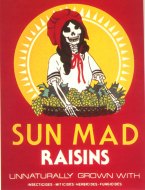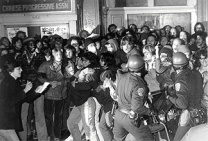Creative Capital: Maria Martinez on ‘The Art of Social Justice’
One of the most pressing questions facing the Baltimore Art + Justice Project is: what is the role of the arts in driving social change?
Maria X. Martinez, deputy director of community programs for the San Francisco Department of Public Health, addresses that question in a short 2007 paper titled ‘The Art of Social Justice.’
Artists not only document social change,” she argues, “they promote, inform, and shape it.”
Whether through music, plays, graphics, paintings, songs, films, media, architecture, textiles, jewelry, photography, poetry, sculpture, pottery, landscapes, written word, spoken word, or dance, art is powerful…For art is the intellectual underpinning of social change; nowhere is there more potential and more need for art than here and now.
Martinez asserts that while government bears the principal responsibility for ensuring that residents are healthy and safe, art plays a vital role by raising awareness, encouraging participation, and reducing the barriers of misunderstanding and mistrust that too often divide decision-makers with institutionalized political and economic power from community members who are most directly affected by social problems.
She cites several instances in which artists have helped to shape public debates in San Francisco. For example, in 1972, an Asian-American arts collective produced posters, murals, and publications to protest the eviction of older adult Filipino and Chinese residents from a low-income residential hotel.
A decade later, artist Ester Hernandez produced a satirical advertisement for “Sun Mad Raisins” in order to draw attention to the public health consequences of pesticide overuse by California’s raisin industry.
Martinez calls for a 1930’s-era, Works Progress Administration-style initiative to provide multi-year funding for community artists whose works serve the social good. This type of public investment would use “…creative capital to promote social justice, mitigate disparities, and build healthy neighborhoods.”
Baltimore has a long history of residents organizing to improve conditions in their communities. It also has an impressive, if less well known, history of local artists using their work to take on the social problems of the day.
Do you have any examples of ways in which the arts have been used to challenge the status quo, reduce disparities, or advocate for positive change? Please share your stories in the comments section or via email.


